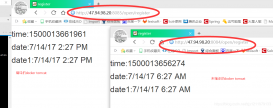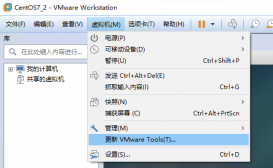1. 配置RTMP服务器
1.1 系统环境
我这里使用的Windows 10 64位
1.2 下载 Nginx
下载地址 : http://nginx-win.ecsds.eu/download/nginx 1.7.11.3 Gryphon.zip
Nginx是一款轻量级的Web服务器,可以在大多数 Unix Linux OS 上编译运行,并有 Windows 移植版,本文所述的RTMP服务器就是基于Nginx开发的module。
1.3 下载 nginx-rtmp-module
nginx-rtmp-module就是基于Nginx开发的RTMP module
下载地址 : https://github.com/arut/nginx-rtmp-module
这里,我们可以直接下载ZIP文件
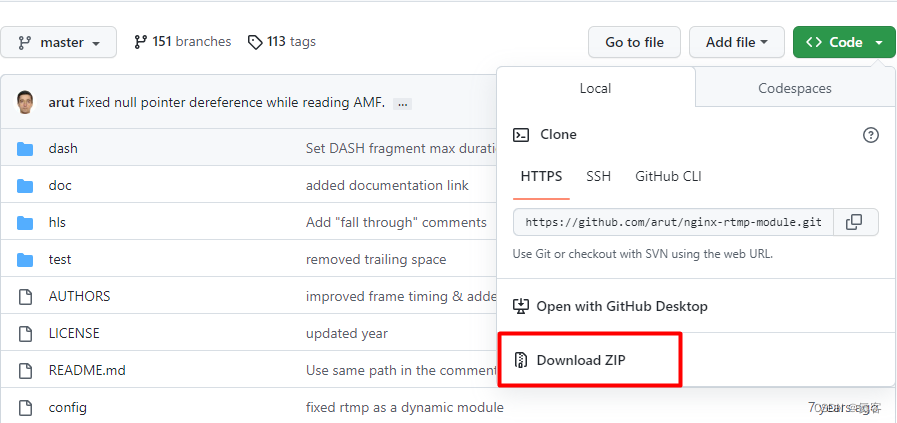
1.4 解压 文件
-
解压
nginx 1.7.11.3 Gryphon.zip,并重命名文件夹为nginx_1.7.11.3 -
解压
nginx-rtmp-module-master.zip,重命名文件夹为nginx-rtmp-module -
将
nginx-rtmp-module文件夹复制到nginx_1.7.11.3目录下
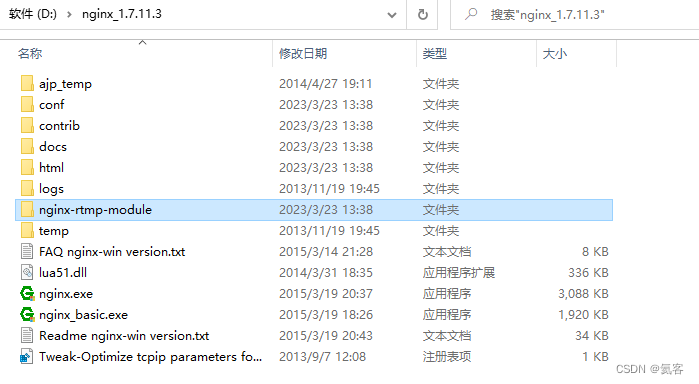
1.5 配置文件 conf\nginx-win.conf
可以先备份一下conf\nginx-win.conf,以防修改出错。
然后编辑conf\nginx-win.conf,修改为如下内容。
#user nobody;
# multiple workers works !
worker_processes 2;
#error_log logs/error.log;
#error_log logs/error.log notice;
#error_log logs/error.log info;
#pid logs/nginx.pid;
events {
worker_connections 8192;
# max value 32768, nginx recycling connections+registry optimization =
# this.value * 20 = max concurrent connections currently tested with one worker
# C1000K should be possible depending there is enough ram/cpu power
# multi_accept on;
}
rtmp {
server {
listen 1935;#监听端口,若被占用,可以更改
chunk_size 4000;#上传flv文件块儿的大小
application live { #创建一个叫live的应用
live on;#开启live的应用
allow publish 127.0.0.1;#
allow play all;
}
}
}
http {
#include /nginx/conf/naxsi_core.rules;
include mime.types;
default_type application/octet-stream;
#log_format main '$remote_addr:$remote_port - $remote_user [$time_local] "$request" '
# '$status $body_bytes_sent "$http_referer" '
# '"$http_user_agent" "$http_x_forwarded_for"';
#access_log logs/access.log main;
# # loadbalancing PHP
# upstream myLoadBalancer {
# server 127.0.0.1:9001 weight=1 fail_timeout=5;
# server 127.0.0.1:9002 weight=1 fail_timeout=5;
# server 127.0.0.1:9003 weight=1 fail_timeout=5;
# server 127.0.0.1:9004 weight=1 fail_timeout=5;
# server 127.0.0.1:9005 weight=1 fail_timeout=5;
# server 127.0.0.1:9006 weight=1 fail_timeout=5;
# server 127.0.0.1:9007 weight=1 fail_timeout=5;
# server 127.0.0.1:9008 weight=1 fail_timeout=5;
# server 127.0.0.1:9009 weight=1 fail_timeout=5;
# server 127.0.0.1:9010 weight=1 fail_timeout=5;
# least_conn;
# }
sendfile off;
#tcp_nopush on;
server_names_hash_bucket_size 128;
## Start: Timeouts ##
client_body_timeout 10;
client_header_timeout 10;
keepalive_timeout 30;
send_timeout 10;
keepalive_requests 10;
## End: Timeouts ##
#gzip on;
server {
listen 80;
server_name localhost;
#charset koi8-r;
#access_log logs/host.access.log main;
## Caching Static Files, put before first location
#location ~* \.(jpg|jpeg|png|gif|ico|css|js)$ {
# expires 14d;
# add_header Vary Accept-Encoding;
#}
# For Naxsi remove the single # line for learn mode, or the ## lines for full WAF mode
location / {
#include /nginx/conf/mysite.rules; # see also http block naxsi include line
##SecRulesEnabled;
##DeniedUrl "/RequestDenied";
##CheckRule "$SQL >= 8" BLOCK;
##CheckRule "$RFI >= 8" BLOCK;
##CheckRule "$TRAVERSAL >= 4" BLOCK;
##CheckRule "$XSS >= 8" BLOCK;
root html;
index index.html index.htm;
}
# For Naxsi remove the ## lines for full WAF mode, redirect location block used by naxsi
##location /RequestDenied {
## return 412;
##}
## Lua examples !
# location /robots.txt {
# rewrite_by_lua '
# if ngx.var.http_host ~= "localhost" then
# return ngx.exec("/robots_disallow.txt");
# end
# ';
# }
#error_page 404 /404.html;
# redirect server error pages to the static page /50x.html
#
error_page 500 502 503 504 /50x.html;
location = /50x.html {
root html;
}
# proxy the PHP scripts to Apache listening on 127.0.0.1:80
#
#location ~ \.php$ {
# proxy_pass http://127.0.0.1;
#}
# pass the PHP scripts to FastCGI server listening on 127.0.0.1:9000
#
#location ~ \.php$ {
# root html;
# fastcgi_pass 127.0.0.1:9000; # single backend process
# fastcgi_pass myLoadBalancer; # or multiple, see example above
# fastcgi_index index.php;
# fastcgi_param SCRIPT_FILENAME $document_root$fastcgi_script_name;
# include fastcgi_params;
#}
# deny access to .htaccess files, if Apache's document root
# concurs with nginx's one
#
#location ~ /\.ht {
# deny all;
#}
}
# another virtual host using mix of IP-, name-, and port-based configuration
#
#server {
# listen 8000;
# listen somename:8080;
# server_name somename alias another.alias;
# location / {
# root html;
# index index.html index.htm;
# }
#}
# HTTPS server
#
#server {
# listen 443 ssl spdy;
# server_name localhost;
# ssl on;
# ssl_certificate cert.pem;
# ssl_certificate_key cert.key;
# ssl_session_timeout 5m;
# ssl_prefer_server_ciphers On;
# ssl_protocols TLSv1 TLSv1.1 TLSv1.2;
# ssl_ciphers ECDH+AESGCM:ECDH+AES256:ECDH+AES128:ECDH+3DES:RSA+AESGCM:RSA+AES:RSA+3DES:!aNULL:!eNULL:!MD5:!DSS:!EXP:!ADH:!LOW:!MEDIUM;
# location / {
# root html;
# index index.html index.htm;
# }
#}
}
1.6 启动RTMP服务器
打开CMD,进入nginx_1.7.11.3目录下,执行如下指令
nginx.exe -c conf\nginx-win.conf
可以看到有个光标一直在闪,就说明RTMP服务器启动成功了
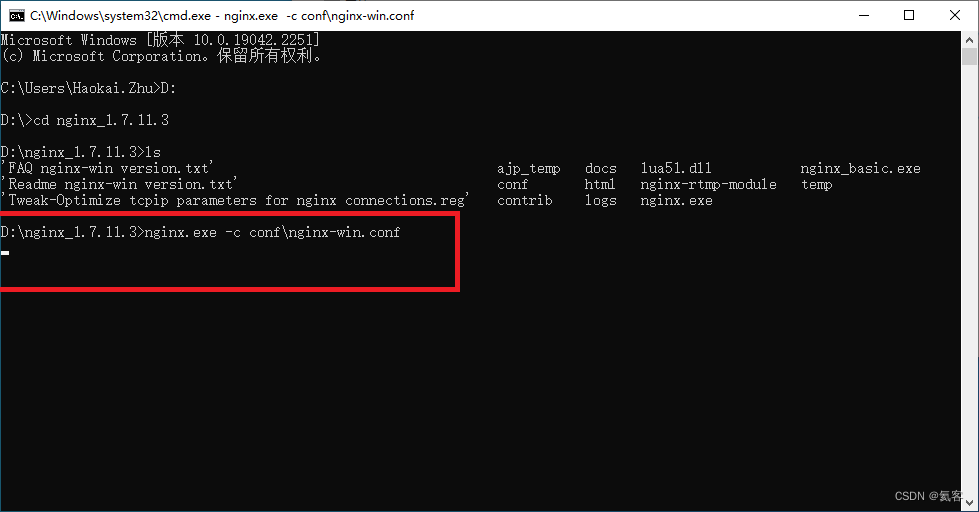
2. 使用FFmpeg推流
2.1 下载FFmpeg
下载页面 : https://github.com/BtbN/FFmpeg-Builds/releases
这里,我们下载 ffmpeg-n4.4.2-2-g7ffb7d4b04-win64-gpl-4.4.zip

2.2 获取一个视频文件
可以是自己用手机录一段视频,导入到电脑上。
或者从网上下载一段视频文件。
2.3 解压 ffmpeg-n4.4.2-2-win64-gpl-4.4.zip
解压 ffmpeg-n4.4.2-2-g7ffb7d4b04-win64-gpl-4.4.zip
进入bin文件夹,我们可以看到如下文件
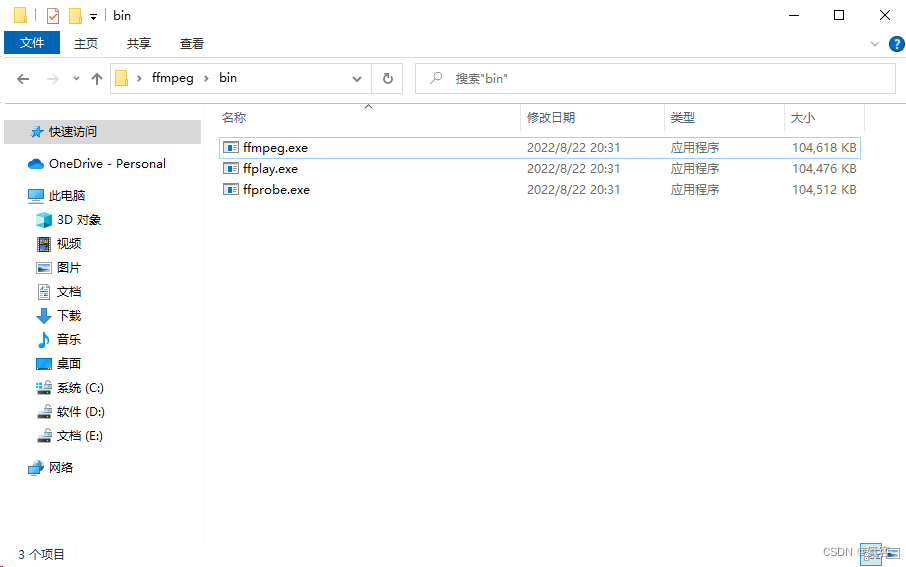
2.4 将视频文件放入
将之前准备的视频文件也放入到这个文件夹下
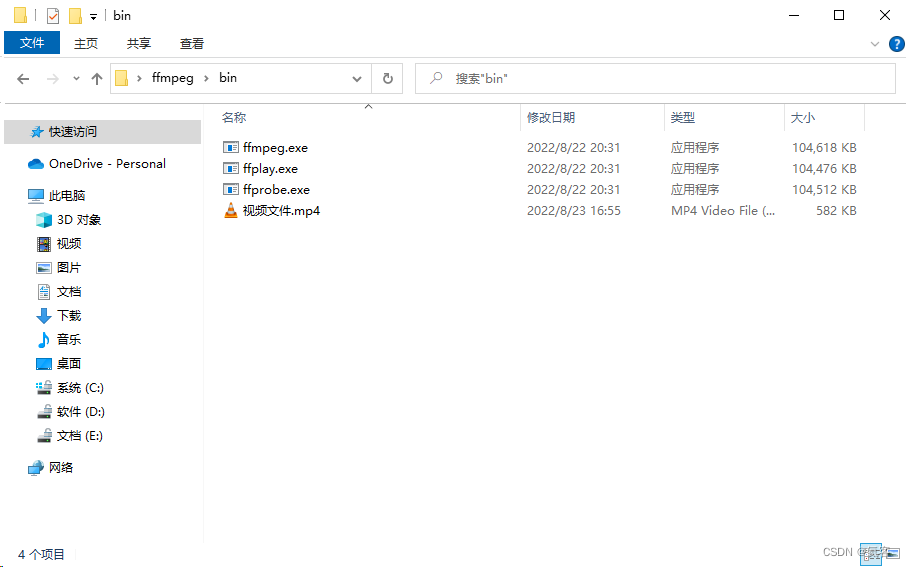
2.5 进行推流
ffmpeg -re -stream_loop -1 -i 视频文件.mp4 -c copy -f flv rtmp://127.0.0.1:1935/live/test
可以看到这里的数值在动,就说明推流成功了
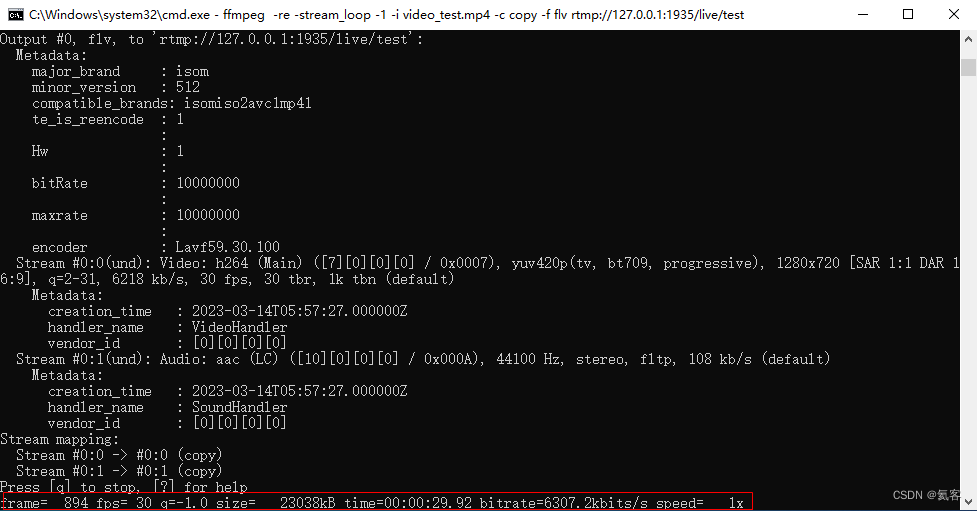
3. 电脑端进行播放
我们打开windows自带的VLC media player , 选择媒体->打开网络串流
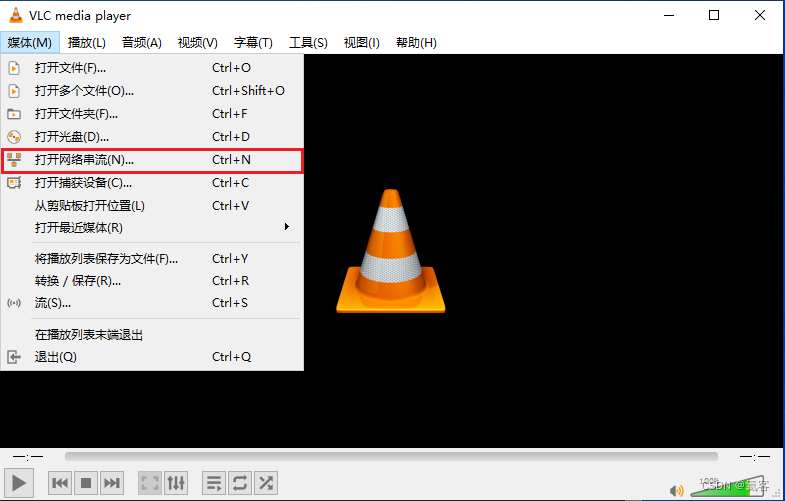
然后输入刚才的RTMP URL : rtmp://127.0.0.1:1935/live/test
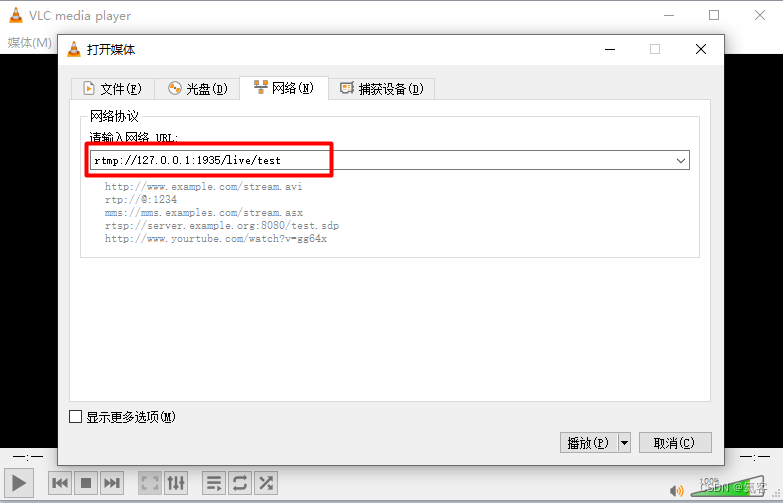
点击播放,就可以看到刚才推流过来的视频了

4. 手机端进行播放
4.1 将手机和电脑连接到同一个局域网中
将手机和电脑连接到同一个局域网中,然后通过ipconfig得知电脑的IP
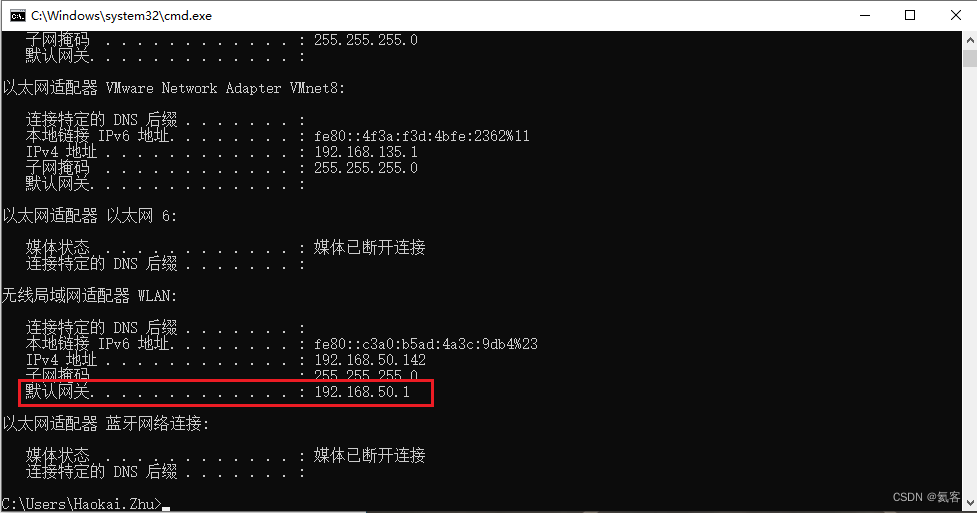
4.2 下载MxPlayer
在手机上,我们可以下载一个MxPlayer播放器,点击 网络串流
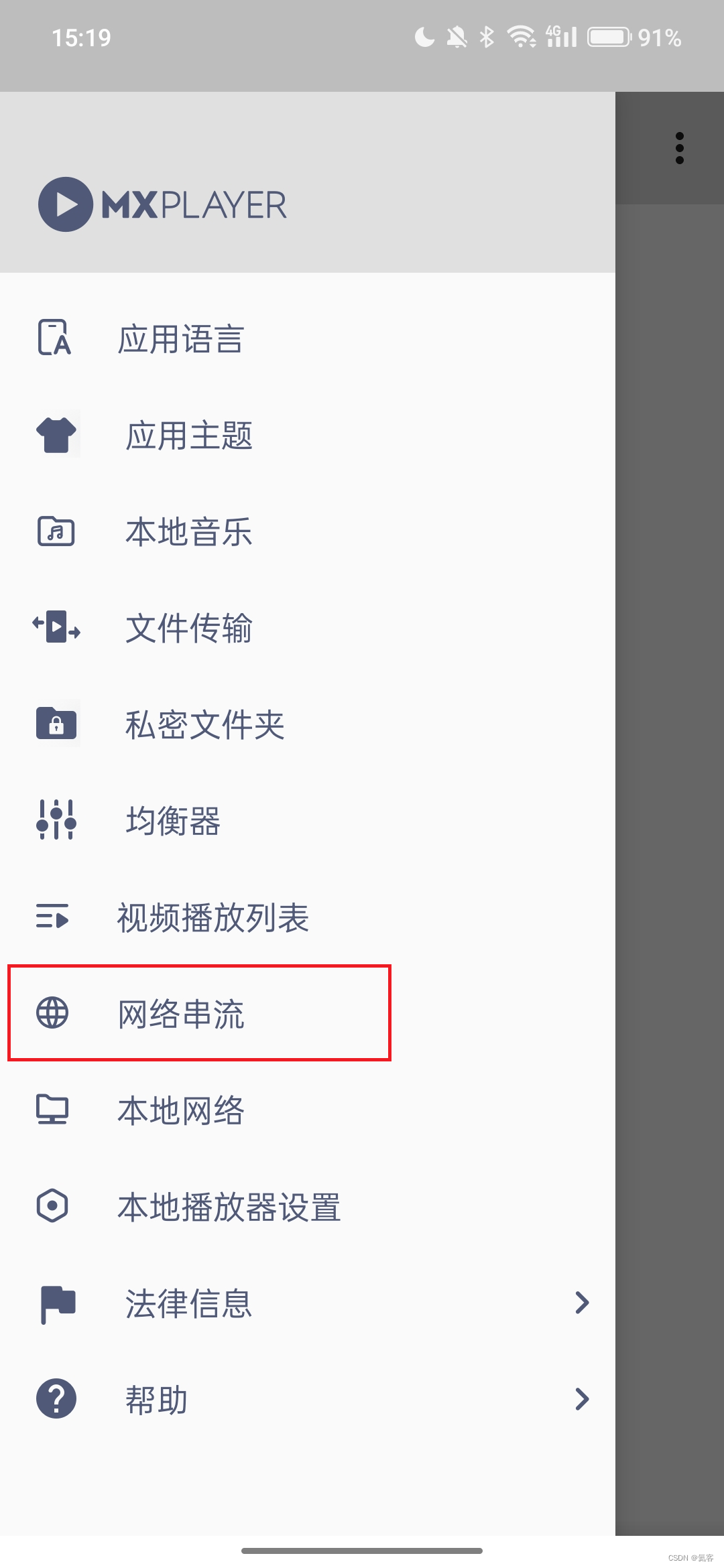
4.3 进行播放
然后输入刚才推流的RTMP URL ,ip改为电脑的具体ip地址 : rtmp://192.168.50.142:1935/live/test
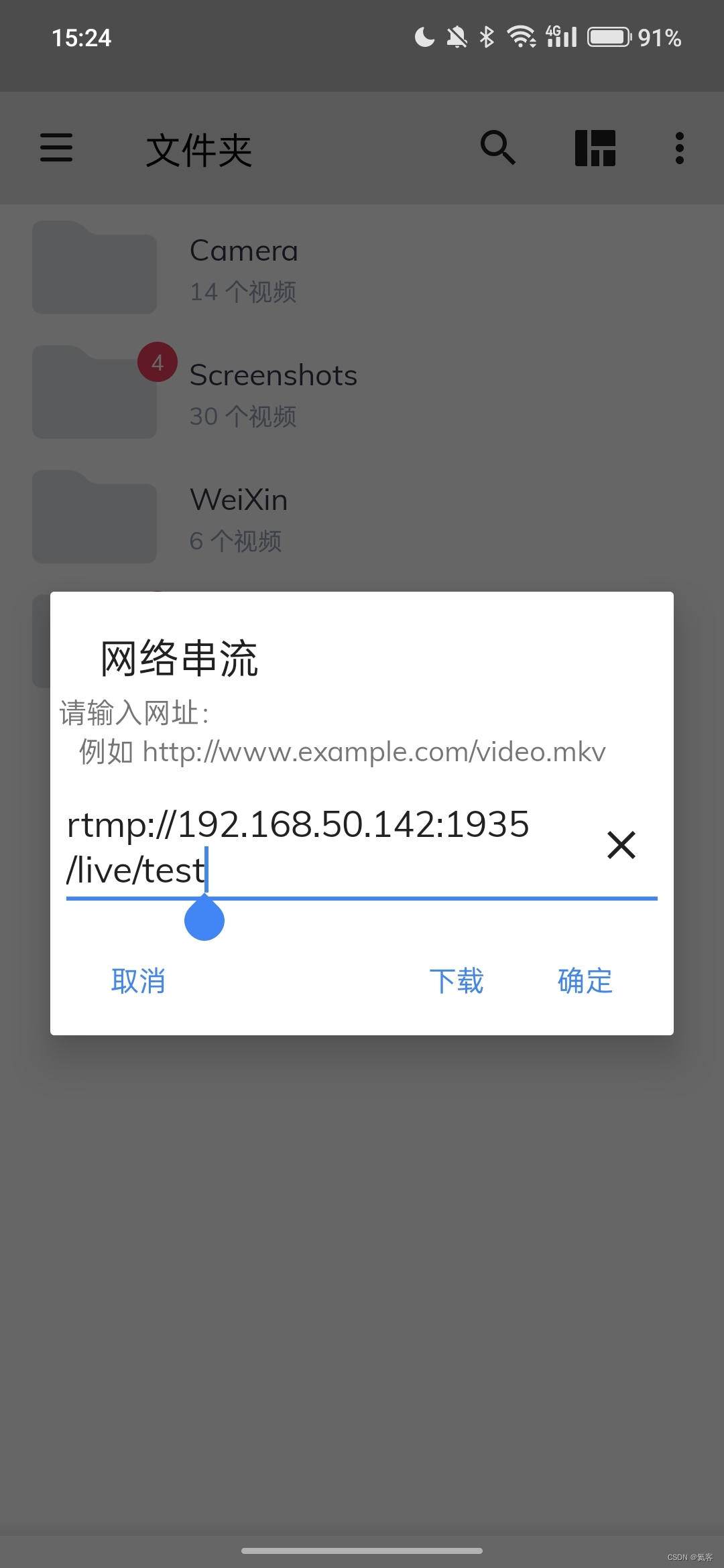
点击确定,可以看到也是正常播放的

5. 其他
如果要在windows环境下,搭建RTSP视频推流服务器,请看我的另一篇文章 :
Android 内置RTSP/RTMP服务器,实现局域网内视频推流与播放 :
Android 内置RTSP/RTMP服务器,实现局域网内视频推流与播放
到此这篇关于windows环境下搭建RTMP视频推流服务器的文章就介绍到这了,更多相关内容请搜索服务器之家以前的文章或继续浏览下面的相关文章希望大家以后多多支持服务器之家!
原文地址:https://blog.csdn.net/EthanCo/article/details/129797921



